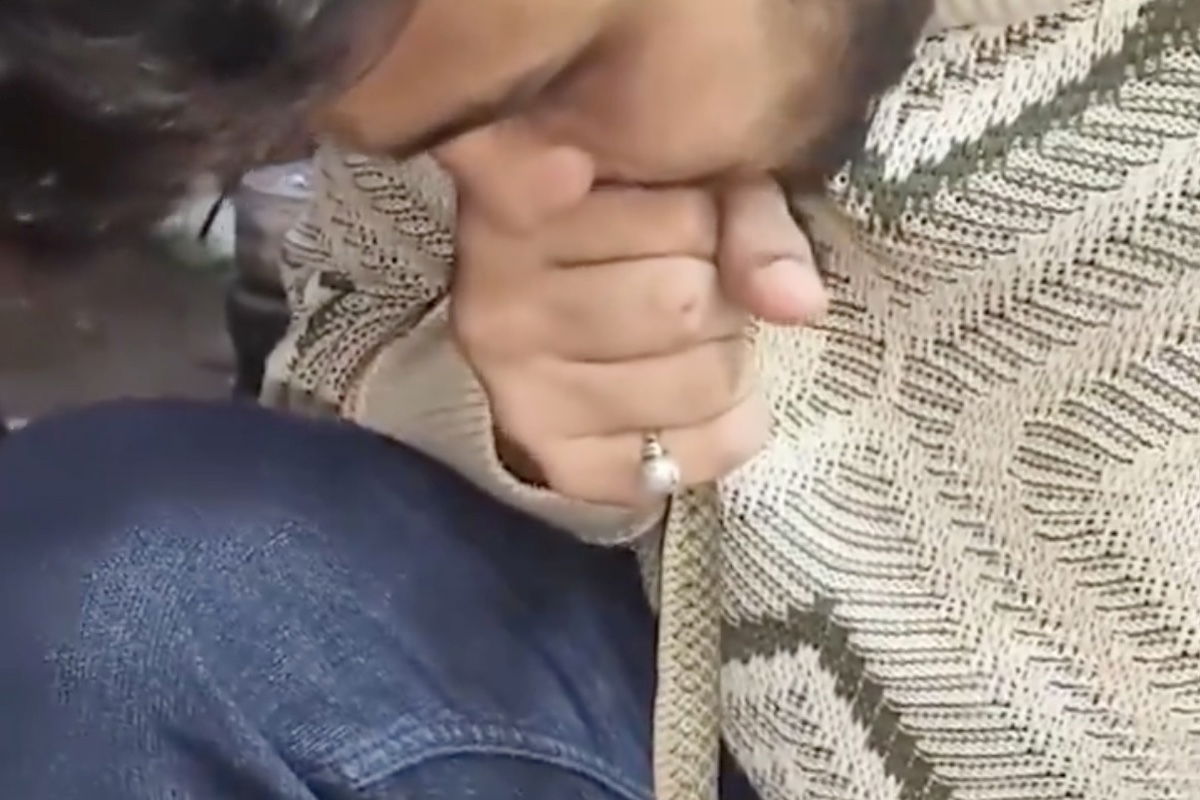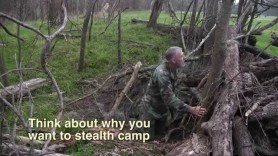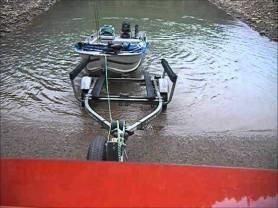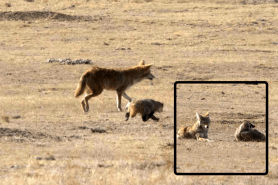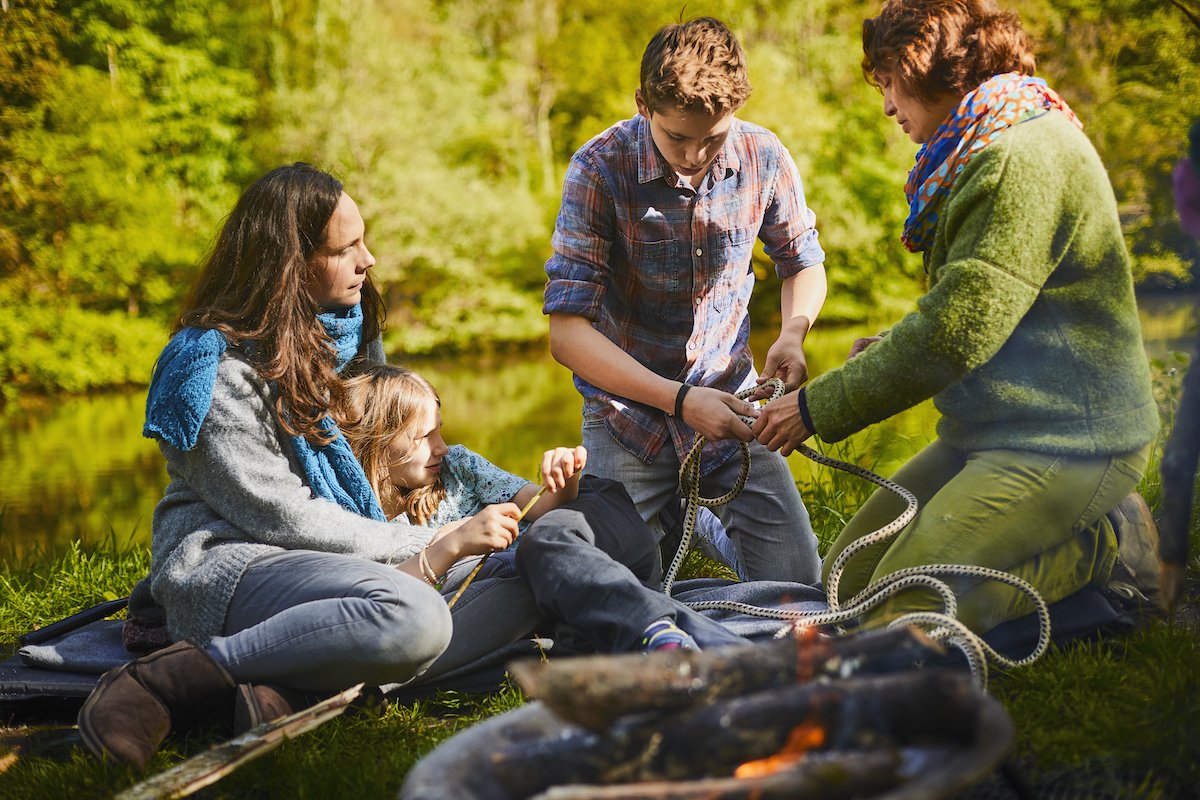

In today’s world of convenient bungee cords, ratchet straps and other devices, knot tying has become a lost art form. And while those devices certainly have their place, there are many situations where tying a knot is just easier. Plus, tying your own knots make the outdoor experience that much more rugged.
Videos by Outdoors
In this article, we’ll show you four types of knots that are great for camping.
Bowline Knot
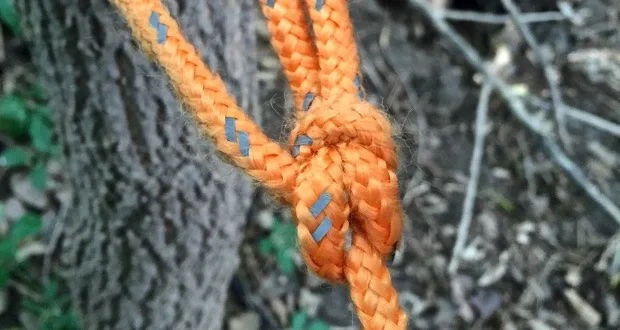
For hundreds of years, the bowline knot has been the favorite of sailors on the high seas because it’s not just versatile, but it’s also strong, secure, and easy to tie. But with that said, it’s also easy to untie, so you shouldn’t rely on it for life-or-death situations. On the campsite, though, we find it incredibly helpful for hanging a clothesline.
4 Steps
- With the rope in your hand, form a small loop.
- Grab the free end and slide it through the hole.
- Think: “The rabbit comes out of the hold.”
- Wrap the rope around the standing line and down through the loop.
- Think: “Around the tree and back down the hole.”
- To tighten, pull the free end of the rope as you hold the standing line.
Source: Net Knots
Square Knot
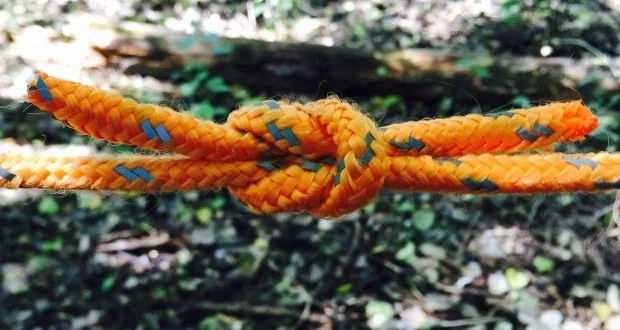
A square knot, or reef knot, is another versatile sailor knot for securing non-critical items. Although it requires two pieces of rope, experts do NOT recommend that you for joining ropes. However, in the field, you can trust it for things like lugging firewood back to the campsite.
5 Steps
- Cross both ends of the rope.
- Pull one side over and the other side under.
- Both ends should be up.
- Cross both ends again
- Then pull one side under.
- To tighten, pull both ends.
Source: Animated Knots
Mooring Hitch

The Mooring Hitch is a quick-release knot. Sure, it’s a little more complicated to tie, but it’s secure and beneficial if you’re in constant need of hanging something up and taking it down like a shower curtain. It should go without saying but don’t rely on a Mooring hitch for things like repelling down a cliff.
4 Steps
- Pull the rope around an object like a branch or pole
- Use the tail to form a loop so the tail touches the standing end
- Pass a bight of the tail (or small curve of rope) across the loop, under the standing end, and over the other end of the loop
- Tighten to take the knot by pulling the loop and the standing end
- To release, pull the tail down
Source: Animated Knots
Blake’s Hitch

Unlike the other knots on this list, Blake’s Hitch is frequently used by climbers and arborists who may need to ascend and descend from an elevated position. However, on the campsite, it’s helpful if you have a thin rope and need to tie off heavy, mobile loads because it’s extremely secure and easy to adjust.
3 Steps
- Wrap the tail end of the rope four times around, working from the bottom to the top
- Pull the tail over the standing line, under the knot, and then through the bottom coil
- Tighten the knot and then tie a figure eight-stopper knot at the end of the line
Source: Net Knots
What are your go-to types of knots for camping? Share in the comments below.
